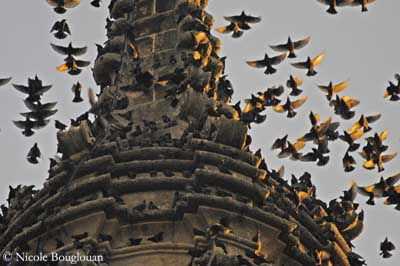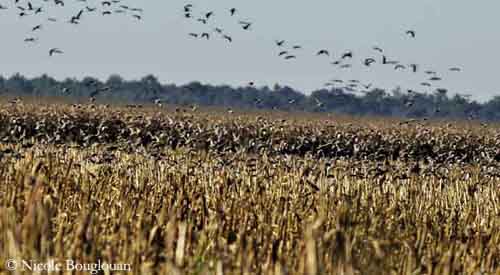
Common Starling
Sturnus vulgaris
Passeriforme Order – Sturnidae Family
BIOMETRICS:
Length: 20-23 cm
Wingspan: 31-40 cm
Weight: 60-96 g
Fr: Etourneau sansonnet
All : Star
Esp : Estornino Pinto
Ital : Storno europeo
Nd : Spreeuw
Russe : Обыкновенный скворец
Sd : Stare
Photographers :
Paul Guillet
Photos d’Oiseaux
Tom Merigan
Tom Merigan’s Photo Galleries
Nicole Bouglouan
PHOTOGRAPHIC RAMBLE
Text by Nicole Bouglouan
Sources :
L’ENCYCLOPEDIE MONDIALE DES OISEAUX - Dr Christopher M. Perrins - BORDAS - ISBN: 2040185607
LE GUIDE ORNITHO par Grant, Mullarney, Svensson, Zetterström - Delachaux Niestle - ISBN: 2603011421
THE COMPLETE BOOK OF BRITISH BIRDS – Written by “Royal Society for the Protection of Birds” experts - Préface de Magnus Magnusson - Michael Cady- Rob Hume Editors - ISBN: 0749509112
THE HANDBOOK OF BIRD IDENTIFICATION FOR EUROPE AND THE WESTERN PALEARCTIC by Mark Beaman, Steve Madge - C.Helm - ISBN: 0713639601
Birds in backyards (Birds Australia and Australian Museum)
Pájaros de España (JL Beamonte)
Wikipedia (Wikipedia, The Free Encyclopedia)

DESCRIPTION:
Common Starling in breeding plumage has iridescent black feathers. We can see glossy purplish and greenish feathers in all parts of its body. It appears as a blackbird, but it has short, square-tipped tail, and triangular pointed wings. Wings and tail are dark.
Bill is yellow with blue base in male, pinkish in female.
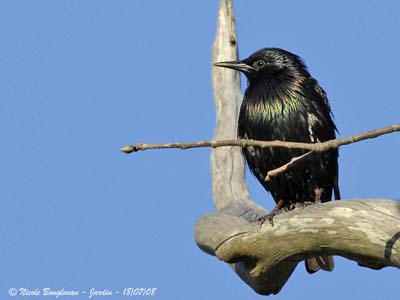
In fall plumage, feathers are tipped white and buff and the bird gets a speckled plumage.
Bill turns dark grey-brown or black. Eyes are dark brown. Legs and feet are reddish-brow.


Both sexes are similar but female appears more heavily spotted than male and has paler eyes. Male has larger throat feathers than female.
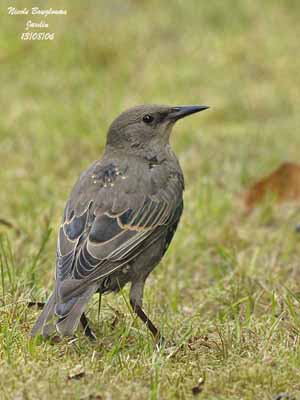
Juvenile is dull grey-brown. Moulting birds have grey and black patches in fall.
Chicks are covered with sparse greyish-white down, and grow rapidly.
VOICE: SOUNDS BY XENO-CANTO
Common Starling utters harsh, buzzing, descending “tcheerr” while taking off. Alarm call is a hard “kyik” and a harsh “schaarh”, both repeated.
Common Starling’s song is a highly varied medley of chirps, clicks, creaks, warbles and gurgles, alternating with clear whistles often descending “wheeeeeeoooooo”.
They are able to mimic the sounds of other birds, or even mechanical sounds included into their songs.
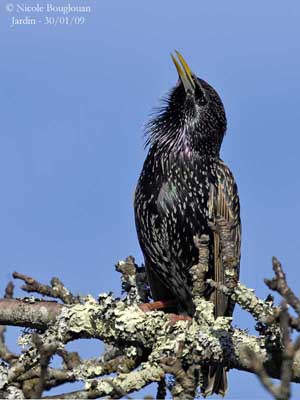
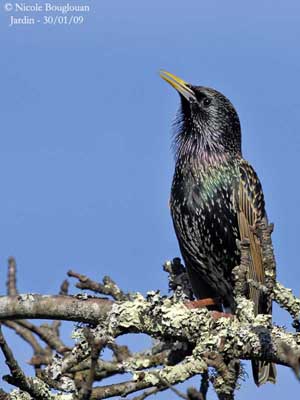
HABITAT:
Common Starling lives in very varied habitats, open woodlands, forest edges, gardens, towns, coastal cliffs, semi-desert and farmlands. It is a bird of lowlands.
RANGE:
Common Starlings are abundant and widespread. They are found in Europe, Western Asia, introduced in 1890 in North America (100 birds), South Africa, Southern Australia and New Zeeland.
Common Starling is native to northern half of Eurasia.
It is resident or partially migratory in most part of its range, with some populations moving southwards to winter.

BEHAVIOUR:
Common Starling is often seen in large flocks, except during the breeding season. Large groups protect them from predators. They are very gregarious, breeding and feeding in small flocks, and migrating in masses.
Common Starling is omnivorous, and it may adapt to all kinds of food. If some foods’ items are protected by skin, or shell, the bird insert its bill into the food, pries it open by widening with its bill, exposing the interior.
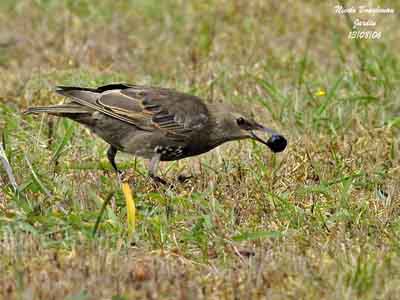
Common Starling introduction in North America has resulted in population declines of other cavity nesters species, with their increasing numbers and their aggressive behaviour.
Courtship displays include “wing-waving” by the male to attract female (wings flap half way). They also sing in the decorated nest to impress their mates. Male closely surveys its female, following her all the day.
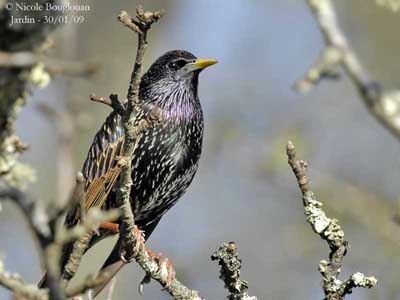
Common Starling may live close to humans in urban areas. It is another notable aspect of their social behaviour, but it may become a real nuisance due to the noise and droppings in roost places.
FLIGHT:
Common Starling performs direct and straight flight, with rapid wing beats, alternating with short glides.
Large flocks move as a single unit, with great precision, to avoid avian predators.
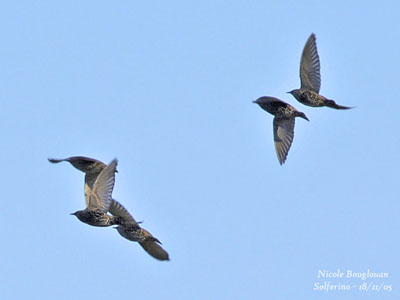
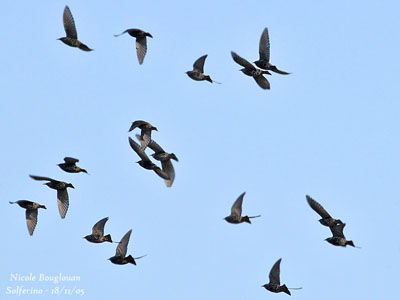
REPRODUCTION:
Common Starling nests in cavities or nest-boxes. The nest is made with sticks, dried grasses and plant fibres, papers, feathers and includes the same materials as in natural or artificial cavities. The nest is situated between 3 and 5 metres above the ground.
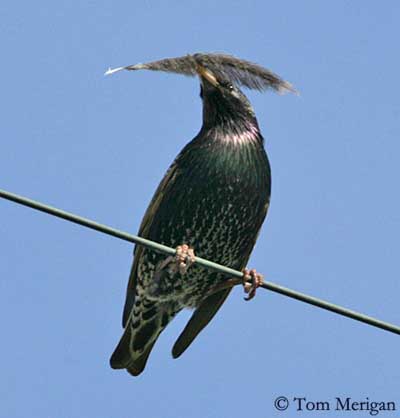
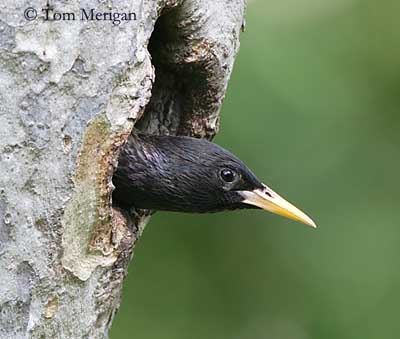
Female lays 4 to 6 glossy pale blue and white eggs. Incubation lasts about 12 to 14 days, more often by female at night. Male gathers with other males in roosts.
Chicks hatch altricial. They are fed by both parents, first with animal foods. Later, they feed them with a wide variety of plant and animal foods. Parents clean the nest, removing fecal sacs from the nest.

DIET:
Common Starling feeds on seeds, insects, small vertebrates, spiders, earthworms and fruits. Coastal birds feed on molluscs and crustaceans. Food varies from a place to other, depending of food resources.

